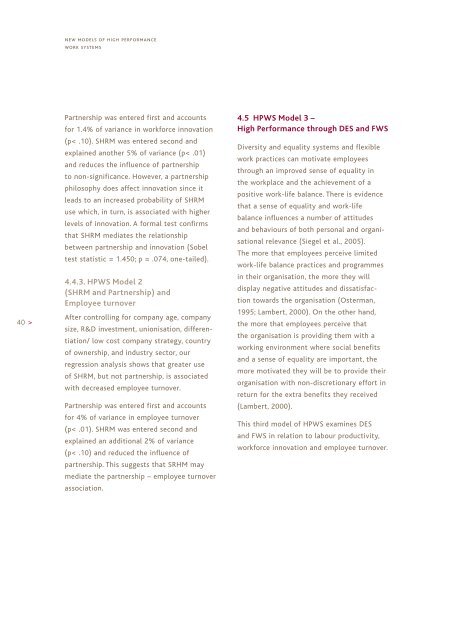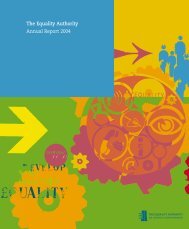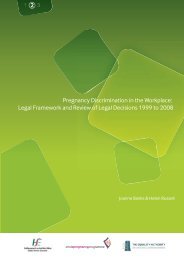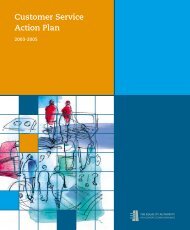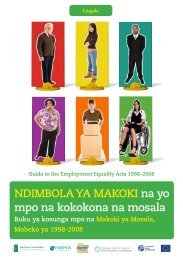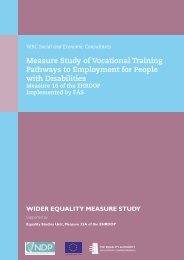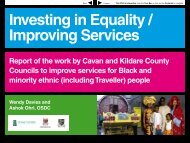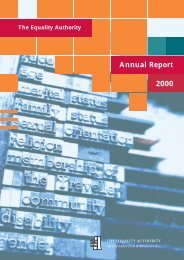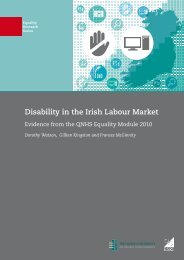New Models of High Performance Work Systems - Equality Authority
New Models of High Performance Work Systems - Equality Authority
New Models of High Performance Work Systems - Equality Authority
- No tags were found...
Create successful ePaper yourself
Turn your PDF publications into a flip-book with our unique Google optimized e-Paper software.
new models <strong>of</strong> high performancework systems40 >Partnership was entered first and accountsfor 1.4% <strong>of</strong> variance in workforce innovation(p< .10). SHRM was entered second andexplained another 5% <strong>of</strong> variance (p< .01)and reduces the influence <strong>of</strong> partnershipto non-significance. However, a partnershipphilosophy does affect innovation since itleads to an increased probability <strong>of</strong> SHRMuse which, in turn, is associated with higherlevels <strong>of</strong> innovation. A formal test confirmsthat SHRM mediates the relationshipbetween partnership and innovation (Sobeltest statistic = 1.450; p = .074, one-tailed).4.4.3. HPWS Model 2(SHRM and Partnership) andEmployee turnoverAfter controlling for company age, companysize, R&D investment, unionisation, differentiation/low cost company strategy, country<strong>of</strong> ownership, and industry sector, ourregression analysis shows that greater use<strong>of</strong> SHRM, but not partnership, is associatedwith decreased employee turnover.Partnership was entered first and accountsfor 4% <strong>of</strong> variance in employee turnover(p< .01). SHRM was entered second andexplained an additional 2% <strong>of</strong> variance(p< .10) and reduced the influence <strong>of</strong>partnership. This suggests that SRHM maymediate the partnership – employee turnoverassociation.4.5 HPWS Model 3 –<strong>High</strong> <strong>Performance</strong> through DES and FWSDiversity and equality systems and flexiblework practices can motivate employeesthrough an improved sense <strong>of</strong> equality inthe workplace and the achievement <strong>of</strong> apositive work-life balance. There is evidencethat a sense <strong>of</strong> equality and work-lifebalance influences a number <strong>of</strong> attitudesand behaviours <strong>of</strong> both personal and organisationalrelevance (Siegel et al., 2005).The more that employees perceive limitedwork-life balance practices and programmesin their organisation, the more they willdisplay negative attitudes and dissatisfactiontowards the organisation (Osterman,1995; Lambert, 2000). On the other hand,the more that employees perceive thatthe organisation is providing them with aworking environment where social benefitsand a sense <strong>of</strong> equality are important, themore motivated they will be to provide theirorganisation with non-discretionary effort inreturn for the extra benefits they received(Lambert, 2000).This third model <strong>of</strong> HPWS examines DESand FWS in relation to labour productivity,workforce innovation and employee turnover.


